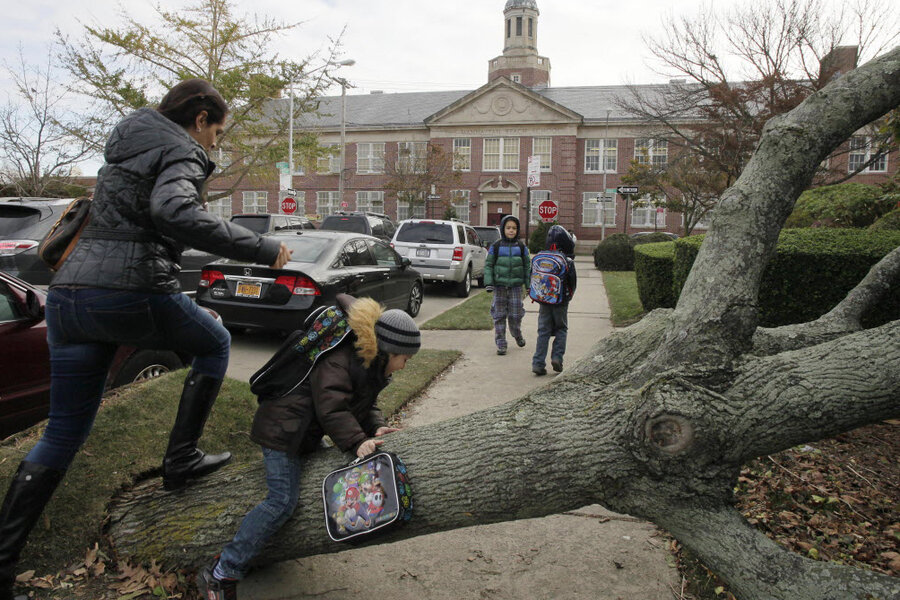In New York: Back to school after Sandy
Loading...
| New York
Nearly a million New York public school students returned to class on Monday after a week at home following superstorm Sandy, although many wore extra layers while janitors repaired drowned heating systems.
About 94 percent of the city's 1,700 public schools reopened on Monday, Mayor Michael Bloomberg said during a visit to a school in Brooklyn that had its basement flooded by the storm last week. The school's power and heating have been restored.
Despite gas shortages, jammed roads, closed subway lines and overcrowded buses on Monday morning, about 86 percent of students in the biggest US school system made it to class, according to provisional attendance figures.
"That's about the same as on the Monday before Election Day last year, and we didn't have Sandy last year so it really is great," Bloomberg said. The USgeneral election is on Tuesday.
Sandy, which brought catastrophic flooding, power outages and structural damage across the US East Coast, caused the biggest disruption to New York schools since the attacks of Sept. 11, 2001, several officials said.
Many school buildings were still being used as emergency shelters until the weekend, and would be transformed again on Tuesday into polling stations.
Nearly 100 schools were still without power, structurally damaged or still in use as shelters on Monday morning.
The 73,000 students who attend those schools were asked to stay home until Wednesday. They could then return to their own schools or be temporarily sent to others, where offices, auditoriums and cafeterias may become stopgap classrooms.
Mark Cannizzaro, the executive vice president of the city's principals union, said the day had passed without any serious hitches.
"There were lot of hugs and a lot of tears in school today, but staff and their students really seemed to pull together and do OK," he said.
Many parents, who were forced to rearrange schedules and find ways to occupy their children for a week, seemed relieved to see schools reopen, even if some buildings were a little chilly.
"They're doing the best they can," said Wendy Romo, 41, as she went to pick up her two children, aged 10 and 7, from Public School 234 in Manhattan.
"The school's normally pretty warm so it was probably comfortable," she said, adding that she had dressed her children in an extra layer of clothing.
The school was without heat and the annex was closed, causing some overcrowding in the main building, parents said.
"I thought it was going to be almost a throw-away day but it wasn't," said Rebecca Carter, who teaches eighth-grade English at the Mary White Ovington school in southern Brooklyn.
"We're reading 'Lord of the Flies,' so we made that connection, about what role does government have. I tried to make it a teachable moment."
Editing by Paul Simao







